Hatchery Research
Why Hatchery Research?
Your South Dakota Game, Fish & Parks hatcheries’ goal is to continually bring the citizens of South Dakota the best possible fish we can. By conducting scientific, controlled, in-hatchery research, we hope that the fish stocked into South Dakota waters will be better suited to thrive and therefore be utilized by the great fishermen and women of our state. How do we do this? We perform in-hatchery research projects designed to improve rearing or stocking practices customized for the fish we grow and stock for you, our customers. Take a look below at some of the current and past research projects and how they have benefitted South Dakota fishermen and women.
Walleye 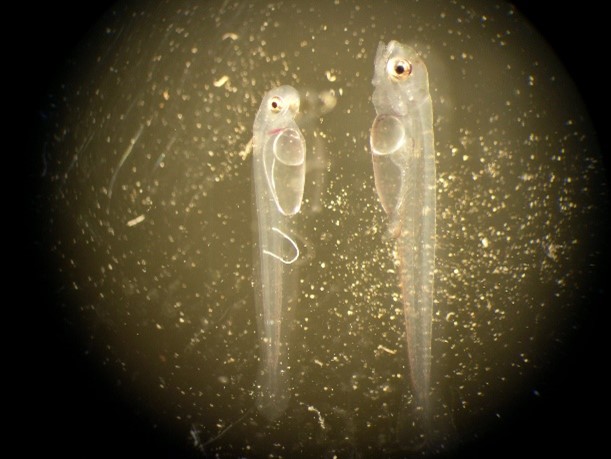
It’s no secret that Walleye are one of the most popular fish in the state of South Dakota. Through innovative pond fertilization practices and ammonia control we have increased maximum pond walleye yield 1.8-fold. By maximizing pond yield, we can maximize the amount of walleye that can be stocked into South Dakota waters. Also, we are currently in the process of increasing walleye production using recirculating aquaculture systems (RAS). Current research is being conducted to maximize yield in a smaller footprint and to even raise catchable size walleyes.
Published Research Articles:
- Evaluating a Three-Fold Continuum of Fry Stocking Density for Rearing Walleye in Lined Ponds
- Factors Associated with Increased Walleye Production in Lined Compared to Earthen-Substrate Ponds
- Comparison of Two Alfalfa Fertilizers Used for Walleye Fingerling Production in Lined Ponds
Suspended Environmental Enrichment
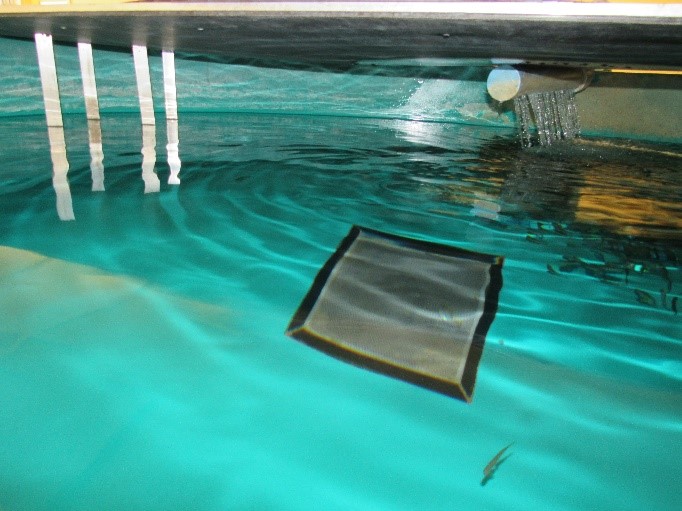 Research performed at our hatcheries has shown that the use of vertically-suspended enrichment in rearing tanks improves growth performance and feed conversion ratios (FCR) of trout and salmon. Better growth performance and improved FCR results in a fish better suited for stocking in public waters at a reduced cost. How do these structures work? Through in-tank 3-dimensional modeling of water flows, we have found that fish can occupy different areas of water velocity in the same tank. Behavioral studies validated this assumption showing fish utilizing these different areas in the same tank. Furthermore, research performed in your South Dakota Hatcheries has shown that fish growth can further be increased with an in-tank exercise routine. It is our hope that through these numerous research projects we can provide a more robust fish to the citizens of South Dakota.
Research performed at our hatcheries has shown that the use of vertically-suspended enrichment in rearing tanks improves growth performance and feed conversion ratios (FCR) of trout and salmon. Better growth performance and improved FCR results in a fish better suited for stocking in public waters at a reduced cost. How do these structures work? Through in-tank 3-dimensional modeling of water flows, we have found that fish can occupy different areas of water velocity in the same tank. Behavioral studies validated this assumption showing fish utilizing these different areas in the same tank. Furthermore, research performed in your South Dakota Hatcheries has shown that fish growth can further be increased with an in-tank exercise routine. It is our hope that through these numerous research projects we can provide a more robust fish to the citizens of South Dakota.
Published Research Articles:
- Behavioral Response of Multiple Rainbow Trout to Vertically Suspended Environmental Enrichment
- Use of Two Vertically-Suspended Environmental Enrichment Arrays during Rainbow Trout Rearing in Circular Tanks
- Exercise and Structure Improve Juvenile Chinook Salmon Rearing Performance
- Effects of Intermittent Exercise during Initial Rainbow Trout Oncorhynchus mykiss Rearing in Tanks Containing Vertically-Suspended Environmental Enrichment
- Vertically-Suspended Environmental Enrichment Alters the Velocity Profiles of Circular Fish Rearing Tanks
Research Innovations
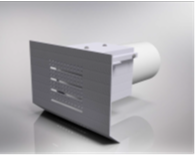 Through various innovative research building projects we have been able to increase production. A novel raceway splashplate designed and built at McNenny State Fish Hatchery resulted in increased dissolved oxygen, increased rearing space, and a reduction in labor required to operate a raceway. Also, a novel pond inlet structure has been designed at McNenny State Fish Hatchery that decreases gas supersaturation of incoming water while being easier to maintain than traditional structures. This reduction in dissolved gas has the potential
Through various innovative research building projects we have been able to increase production. A novel raceway splashplate designed and built at McNenny State Fish Hatchery resulted in increased dissolved oxygen, increased rearing space, and a reduction in labor required to operate a raceway. Also, a novel pond inlet structure has been designed at McNenny State Fish Hatchery that decreases gas supersaturation of incoming water while being easier to maintain than traditional structures. This reduction in dissolved gas has the potential to reduce hazardous fish health issues related to supersaturation of dissolved gases in the water. Lastly, in a coordinated effort to reduce Chinook salmon escapement from the spawning station, a novel fish ladder weir was designed and built at McNenny State Fish Hatchery. This novel weir effectively held salmon at the spawning station while allowing new salmon to enter at the same time. The result was more salmon for us to spawn and collect eggs from for stocking into Lake Oahe.
to reduce hazardous fish health issues related to supersaturation of dissolved gases in the water. Lastly, in a coordinated effort to reduce Chinook salmon escapement from the spawning station, a novel fish ladder weir was designed and built at McNenny State Fish Hatchery. This novel weir effectively held salmon at the spawning station while allowing new salmon to enter at the same time. The result was more salmon for us to spawn and collect eggs from for stocking into Lake Oahe.
Published Research Articles:
- A Degassing Inlet Structure for Aquaculture Ponds
- A Novel Trout Pond Inlet Structure
- A Novel Splash Plate Design for Serial Reuse Raceways
Chinook Salmon
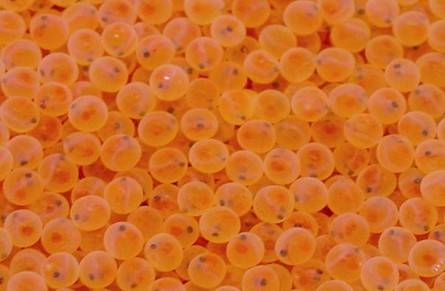 We have been performing biological research for over 30 years on the state’s landlocked Chinook salmon. Through collaborative research with the Lake Oahe fisheries managers, we have been able to sustain a population of Chinook salmon that would otherwise not be able to live here. Through constant refinement of our techniques, we have discovered ways to streamline the fertilization procedure. For example, we have discovered that milt only remains active to fertilize an egg for up to 30 seconds. Standard knowledge was to allow the milt to soak on the eggs for 2 minutes.
We have been performing biological research for over 30 years on the state’s landlocked Chinook salmon. Through collaborative research with the Lake Oahe fisheries managers, we have been able to sustain a population of Chinook salmon that would otherwise not be able to live here. Through constant refinement of our techniques, we have discovered ways to streamline the fertilization procedure. For example, we have discovered that milt only remains active to fertilize an egg for up to 30 seconds. Standard knowledge was to allow the milt to soak on the eggs for 2 minutes.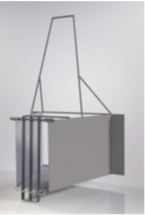 Reducing the time milt stays on the eggs has significantly reduced the number of hours people spend fertilizing eggs. Furthermore, we have helped fisheries managers determine the best way to procure salmon for spawning operations. Through collaborative research we have determined that sourcing salmon by electrofishing resulted in reduced egg quality and survival. Also, by building an innovative fish ladder weir, escapement of nearly 40% of fish that had ascended the ladder was effectively reduced to 0%.
Reducing the time milt stays on the eggs has significantly reduced the number of hours people spend fertilizing eggs. Furthermore, we have helped fisheries managers determine the best way to procure salmon for spawning operations. Through collaborative research we have determined that sourcing salmon by electrofishing resulted in reduced egg quality and survival. Also, by building an innovative fish ladder weir, escapement of nearly 40% of fish that had ascended the ladder was effectively reduced to 0%.
Published Research Articles:
- Fish Ladder Weir Modifications to Minimize Escapement
- Effect of Activated Milt Residence Time on Landlocked Fall Chinook Salmon Egg Survival
- Electrofishing of Landlocked Fall Chinook Salmon Broodstock Negatively Impacts Egg Survival
- Impacts of Zebra Mussel Veliger Control Treatments on the Survival of Water-Hardened Landlocked Fall Chinook Salmon Eggs
Water Quality/Tempering
To bring the best possible fish return to angler, we constantly perform experiments to refine our methodology. One concern was the fact that the fish we stock will experience different water chemistry parameters compared to the rearing hatchery. 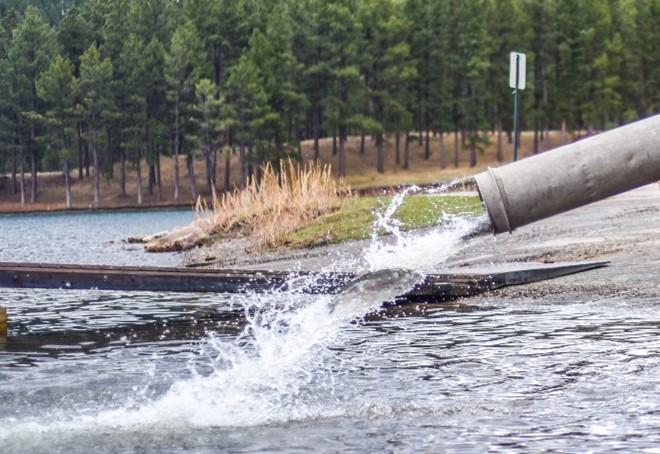 Traditional knowledge was to sit at the receiving water bodies edge and slowly temper the fish to the new body of water prior to stocking. This presents a problem to the hatchery in that there is a possibility of transferring a disease or an aquatic invasive species back to the hatchery. Through controlled experimentation we have determined that tempering will not increase survival of our eggs or stocked salmonids.
Traditional knowledge was to sit at the receiving water bodies edge and slowly temper the fish to the new body of water prior to stocking. This presents a problem to the hatchery in that there is a possibility of transferring a disease or an aquatic invasive species back to the hatchery. Through controlled experimentation we have determined that tempering will not increase survival of our eggs or stocked salmonids.
Published Research Articles:
- Sudden Changes in Water Hardness Do Not Impact Short-Term Rainbow Trout Survival
- Stress Response of Rainbow Trout Subjected to Elevated and Near Lethal Temperatures
- Thermal Tempering Does Not Increase the Survival of Eyed Salmonid Eggs
- Thermal Tempering Does Not Impact Rainbow Trout and Brown Trout Survival
Current and Future Research
- Ammonia control methods for RAS walleye culture
- Probiotic diets and their effect on Bacterial Coldwater Disease
- Stocking success of catchable walleye
- RAS culture refinements for walleye, largemouth bass, musky, and bluegill
- Submerged spray bars and their effect on radon levels in the hatchery
- Otolith microstructure relating to different rearing techniques
- Walleye egg petri dish culture refinements
- Standardization of walleye spawning methods
What Does This Mean for You?
Hopefully fishermen and women are reaping the rewards of our research. Through a research-based approach to fish rearing, we have been able to substantially increase rainbow trout stocking size in the Black Hills to avoid Northern Pike predation. We are currently researching and refining methods to bring more sunfish and largemouth bass to our urban fisheries. We are researching ways to stock catchable size walleye. Plus, our research-based approach and collaboration with Lake Oahe fisheries managers ensures South Dakotans have Chinook salmon to catch every year.

